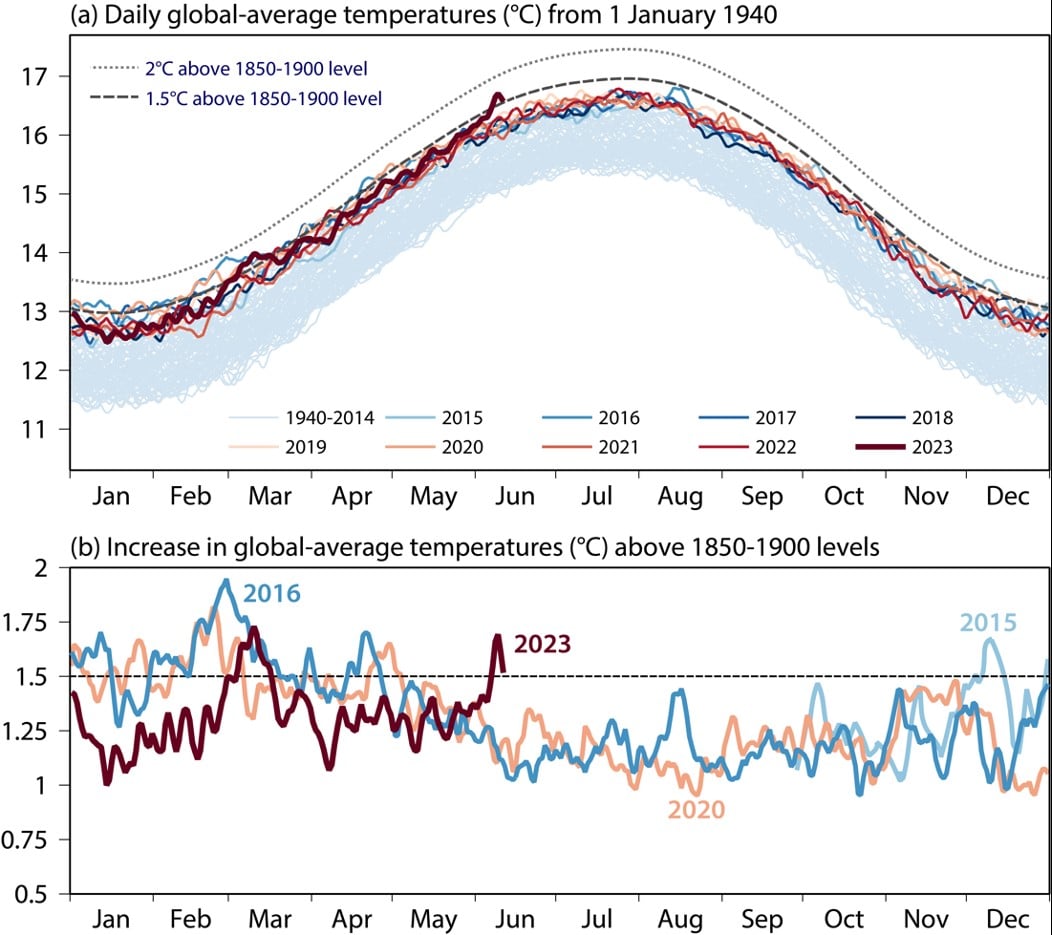(CN) — The first part of June was the hottest on record globally, an ominous sign as the El Niño weather pattern sets in and threatens to make 2023 one of the hottest – if not the hottest – ever registered, European climate scientists warned Thursday.
The first 11 days of June saw the hottest temperatures on record for this time of the year and marked the first time in June that the global mean temperature exceeded the important threshold of 1.5 degrees Celsius (2.7 degrees Fahrenheit) above the pre-industrial level, the Copernicus Climate Change Service said in its latest report.
“The world has just experienced its warmest early June on record, following a month of May that was less than 0.1 C cooler than the warmest May on record,” said Samantha Burgess, the deputy director at Copernicus. “Monitoring our climate is more important than ever to determine how often and for how long rises in global temperatures are exceeding 1.5 C. Every single fraction of a degree matters to avoid even more severe consequences of the climate crisis.”
The 2015 Paris climate agreement set 1.5 C as a global threshold in atmospheric warming and scientists warn that exceeding that point for long periods will make the planet drastically and dangerously different. Under the Paris agreement, governments pledged to reduce carbon emissions in order to keep the planet's temperature below that threshold.
Copernicus, the European Union's climate agency, said monitoring when the planet exceeds that benchmark is “a good indicator of how fast we are approaching the 1.5 C threshold set in the Paris Agreement.”
Scientists warn that the emergence earlier this month of El Niño – a naturally occurring weather phenomenon that in the past has led to record heat – and human-caused global warming will likely make the next five years among the warmest on record. In May, the World Meteorological Organization forecast there is a 66% likelihood that between now and 2027, the globe will have a year that averages the 1.5 C threshold.
This isn't the first time the 1.5 C threshold has been broken, Copernicus said. That happened in December 2015 and repeatedly in the winters and springs of 2016 and 2020. An El Niño pattern helped make 2016 the hottest year on record.
Even though the 1.5 C mark has been exceeded for brief periods, Copernicus said this doesn't mean that the limit stipulated by the Paris agreement has been surpassed because that would take place once the planet records excessive heat averages for two or more decades.
Thursday's warning about the high global temperature for June comes as parts of the Northern Hemisphere reel from an unusually dry and warm spring that sparked the outbreak of large-scale wildfires in Eurasia, Canada and Spain. Canadian wildfires covered much of the U.S. Northeast in smoky air last week.
Courthouse News reporter Cain Burdeau is based in the European Union.
Subscribe to Closing Arguments
Sign up for new weekly newsletter Closing Arguments to get the latest about ongoing trials, major litigation and hot cases and rulings in courthouses around the U.S. and the world.









